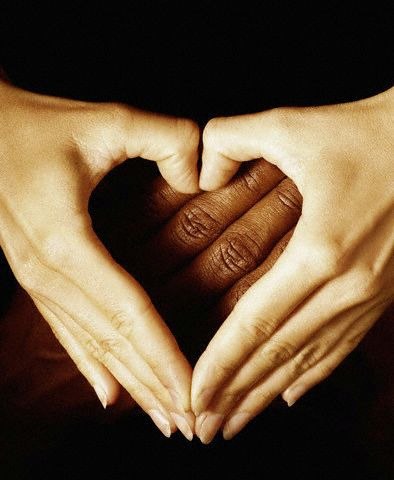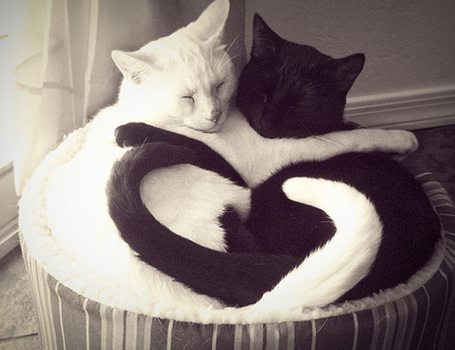 Despite the fact that it is 2012 and that the countries of the world are increasingly more diverse, there remain inter-cultural stigmas against interracial dating and marriage. While rates of interracial relationships are increasing in country after country throughout the West, the undeniable reality of institutionalized inequity and personal prejudice continues to leave room for doubt in the minds of many.
Despite the fact that it is 2012 and that the countries of the world are increasingly more diverse, there remain inter-cultural stigmas against interracial dating and marriage. While rates of interracial relationships are increasing in country after country throughout the West, the undeniable reality of institutionalized inequity and personal prejudice continues to leave room for doubt in the minds of many.
First, a disclaimer: scientists continue to insist that there is only one human race and many different ethnicities. But, within the popular vernacular, the term race serves as a code-word depicting the expression of visible difference between people of different geographic origins. So I will use the term in that context throughout this article.
In Canada, there was a point recently when the rates of interracial marriage rose?30% in 5 years.?In the United States, African American men date and marry outside of their ethnicity at a higher rate than African American women. Across the board and no matter the ethnic group or country of origin, 1 out of every 7 marriages in the United States is interracial. ?In fact, among the youngest generation of Americans, the Millennials, acceptance of mixed relationships is as high as 85%, which is a testimony to the increasing tolerance of the young. As 25% of the American population, the younger generation plays a large role in determining current and future trends for the nation and the world. ?Increasing acceptance and engagement in interracial relationships is perhaps a sign that tolerance levels are rising.
While immigration is rising in Canada and other countries, immigration has slowed in the United States. The economic downturn has resulted in more people moving to countries where the economies are booming rather than stagnating or regressing. The increased diversity that the rise in immigration has resulted in has probably contributed to the rise in interracial relationships in Canada. In the United States, the current level of diversity and increasing cross-cultural interaction have led to a situation whereby the social strictures prohibiting interracial relationships have made less sense in the daily lives of people who interact with different ethnic and racial groups constantly. Familiarity with people of different origins breaks down the social and societal barriers as the realization that people are the same no matter what they look like overcomes familial and cultural taboos.
And yet, while the instances of interracial relationships are on the increase, certain problems still arise. As with all marriages, divorce rates remain high and, in the United States, these rates are higher for interracial couples than for any others. There also remain psychological stigmas within specific groups that affect interracial couples. Also in the United States, white women who engage in interracial relationships often receive more psychological distress, while black men?similarly?engaged receive less. Within the Black community, there remains a simmering resentment on the part of some to interracial relationships, especially within the ranks of black women. Even as progress continues, there remain inflammatory and conflicting beliefs and stereotypes that continue to dog groups of people in the arena of interracial relationships.
 Within minority groups in particular, the more difficult social stigmas remain centered upon engaging in interracial relationships with whites, as opposed to members of other minority groups. Within the black community in general, entering into relationships with individuals of Mexican, American Indian, or members of any east or south Asian group is generally perceived as being?better, or more acceptable than entering into congress with white men or women. This has to do particularly with that groups peculiar history and millennia-long interrelationship with Europe and its descendants. The historical imposition of slavery and the continuing institutionalization of privilege based upon race that has ossified due to its hoary standardization within the implicit structures of eurocentrism and the Western cultural impetus continue to play their part in forming the attitudes of current generations of black Americans.
Within minority groups in particular, the more difficult social stigmas remain centered upon engaging in interracial relationships with whites, as opposed to members of other minority groups. Within the black community in general, entering into relationships with individuals of Mexican, American Indian, or members of any east or south Asian group is generally perceived as being?better, or more acceptable than entering into congress with white men or women. This has to do particularly with that groups peculiar history and millennia-long interrelationship with Europe and its descendants. The historical imposition of slavery and the continuing institutionalization of privilege based upon race that has ossified due to its hoary standardization within the implicit structures of eurocentrism and the Western cultural impetus continue to play their part in forming the attitudes of current generations of black Americans.
In a time of increased interracial interaction and a more fuller recognition at the societal level of the innate equality of all individuals regardless of race, creed or circumstance, the leavings of discrimination and marginalized social status continue to echo within the inter-generational instructions passed down from parents to children. Warnings regarding the dangers of unwarranted trust and racial scapegoating, of perceived equality and implicit inequality, of responsibility to one?s people and selling out. The remains of 400 years of American Slavery, the Black Codes and Jim Crow?continue to bear bitter fruit in the memories of the genetically-mixed inheritors of the Black Experience. While the politics of race and difference die a slow and painful death on a national stage where a black President pays little attention to the plight of ?his people? and moderates and extremists of a conservative bent take advantage by engaging in traditional and seditious methods of political one-upmanship, out-group ostracization and voter disenfranchisement, individuals who disregard these larger scale power plays are considered to be foolish or dangerously unaware of trends that seem to point to a deepening of resentment and victimization of traditional minority groups. An old and familiar pattern.
And yet, despite these seeming regressions in political interplay and adherence to out-dated and separatist ideologies and methodologies, within the corpus of many Western nations, attitudes have changed and continue to morph and shift in relation to the times. Despite the continuing suspicion, doubt and conditional acceptance of the perceived reality on the part of different ethnic and minority groups, interpersonal attitudes do continue to evolve, the plight of individual groups previously considered isolated are seen to be interrelated, former ideals of separation and superiority are seen to be misguided and desperate attempts to divide and conquer, to command and control.
As the economic plight of the Western countries continues to veer and tilt wildly and seemingly out of control and the middle class continues to dissipate, wealth concentrating in even greater amounts within the ranks of the power elite, a realization seems to be taking hold among many previously quiescent and inclined towards support of the establishment and status quo. This realization has to do with the interrelated political and economic systems and the tenuous nature of their positions within them. That realization is concerned with the unity of purpose shared by people in general and is part and parcel of the general trend towards an increased acceptance of difference.

The world itself is in the midst of transformational evolution; an evolution of cultural mores, economics and politics. The realization that the future does not have to be as the past has become the clarion call that unites generations while eating away at the ingrained attitudes and institutions of an illegitimate and unworkable system. The shift in racial attitudes is only one reflection of this overall trend. As couples continue to find love across cultural barriers, each iteration, each relationship or marriage, is an announcement of intent; of a break with a broken past and a linking to a united future as representative of the implicit promise of the West as the culmination of the process of integration of Old World peoples in what has been, is and will continue to be the manifestation of a truly New World.
Like this:
Be the first to like this post.
east west shrine game haywire underworld awakening carlos pena dog the bounty hunter doppler radar tacoma narrows bridge
No comments:
Post a Comment
Note: Only a member of this blog may post a comment.